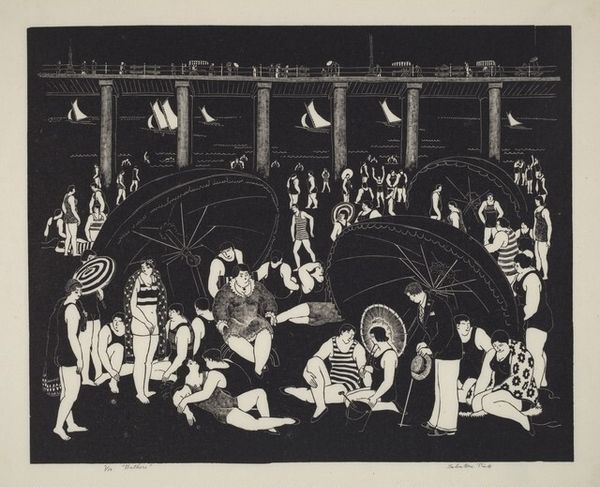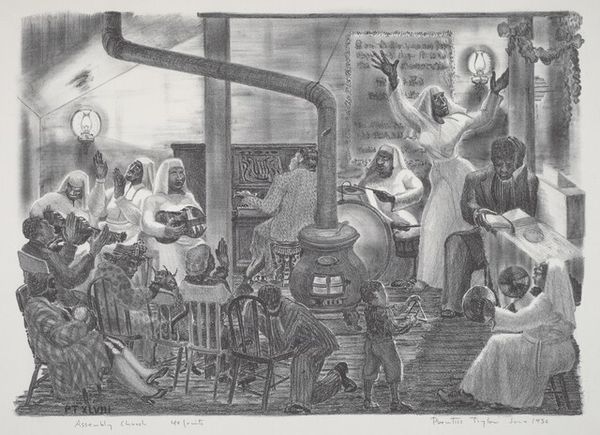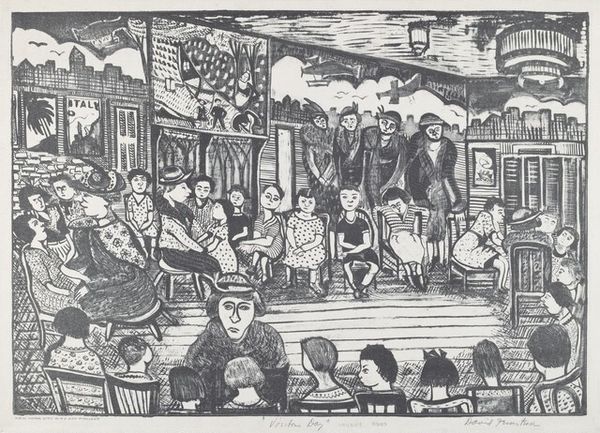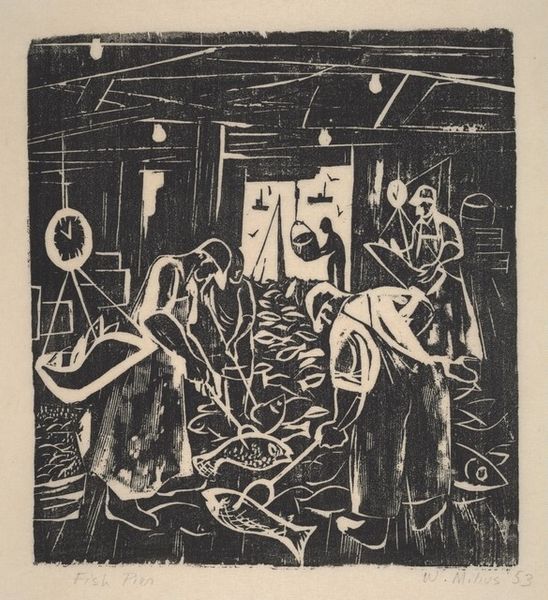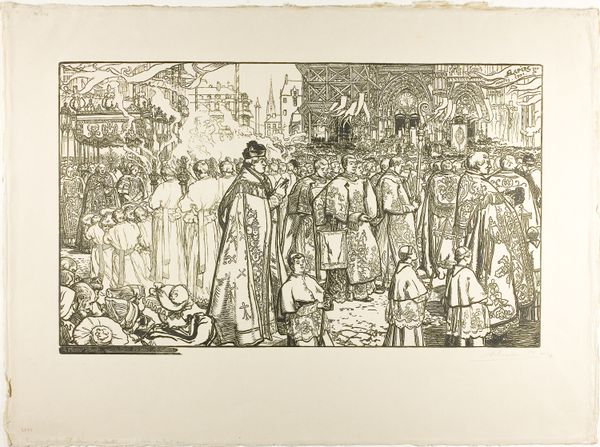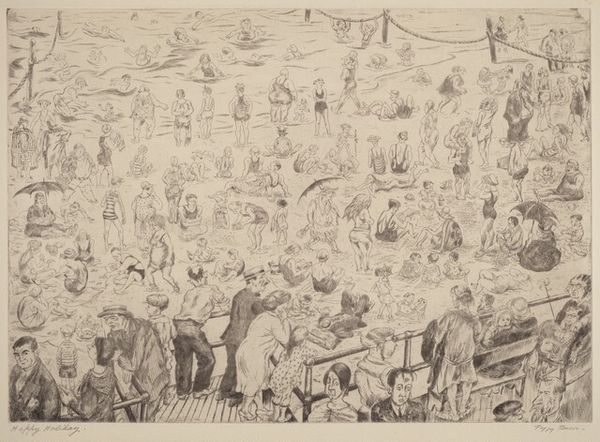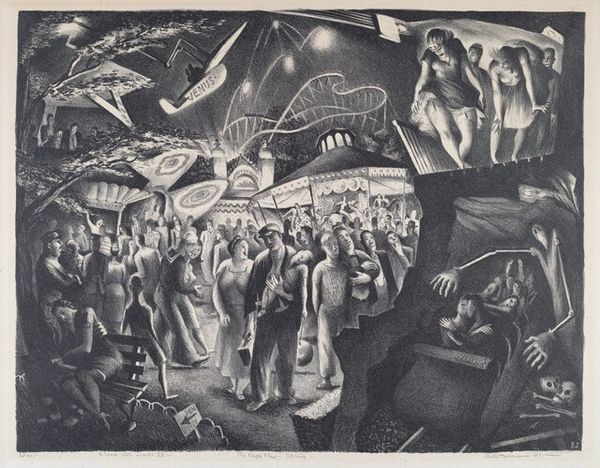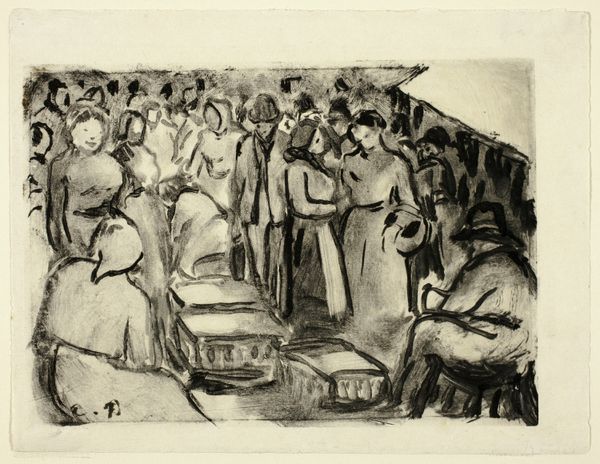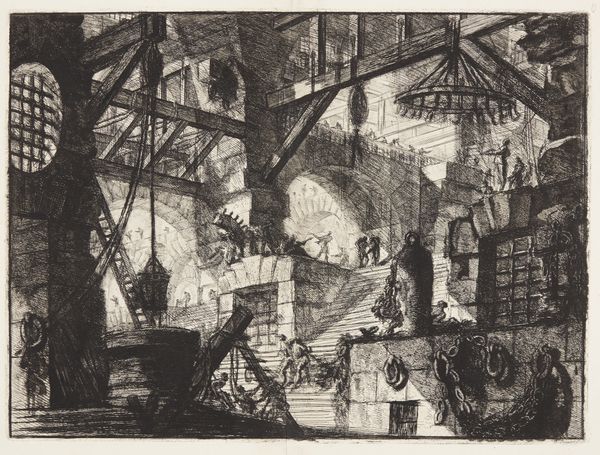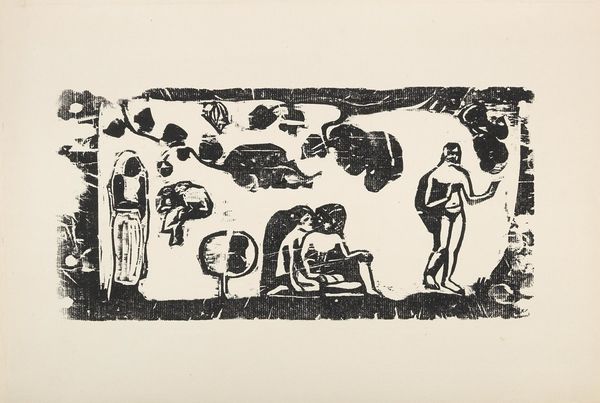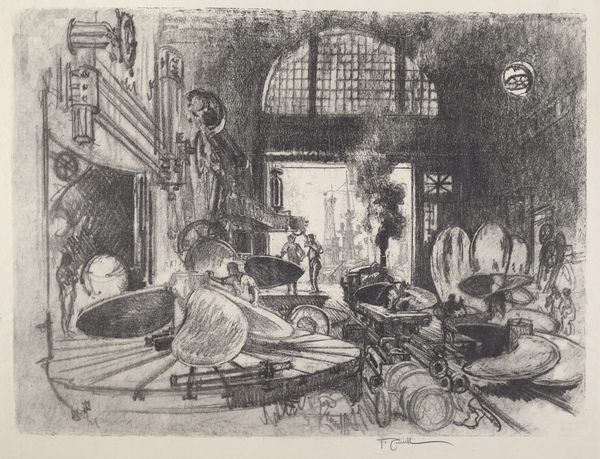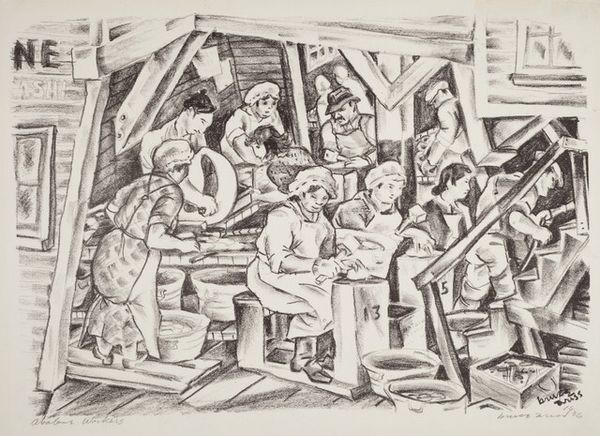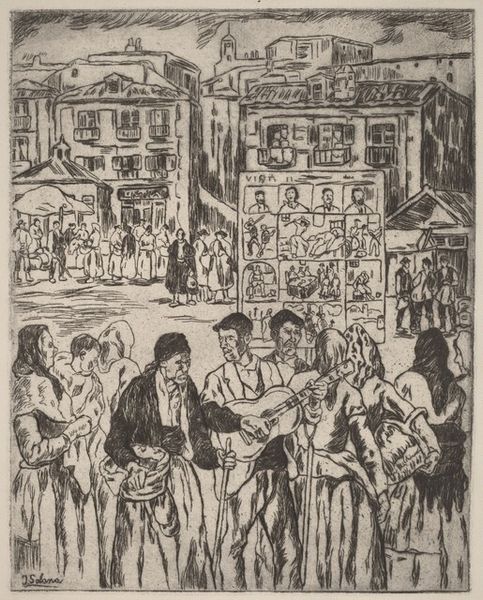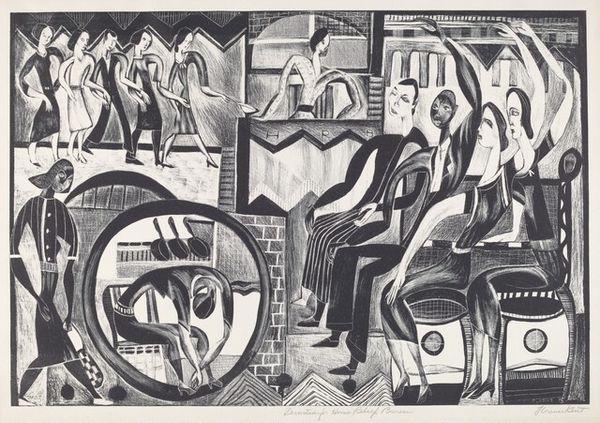
# print
#
landscape
#
caricature
#
figuration
#
cityscape
#
genre-painting
#
history-painting
Dimensions: image: 203 x 248 mm sheet: 248 x 298 mm
Copyright: National Gallery of Art: CC0 1.0
Editor: This print, titled "Sailors," by Salvatore Pinto, dates to around 1930. It depicts a busy beach scene in a very graphic style. What strikes me is the strong contrast between the black ink and the white paper. What do you see in this piece? Curator: Indeed. The high contrast creates a bold visual statement. Consider the composition. The artist employs a flattened perspective, almost like a stage set, where figures are arranged across the picture plane. Notice how the shapes and lines contribute to an overall pattern rather than a realistic depiction of space. The negative space is just as crucial as the positive forms; the eye alternates between the two, activating the design. Editor: That's interesting. It does feel very deliberately arranged. So, you're suggesting the subject matter, the actual scene, is less important than the way it's put together? Curator: Precisely. Think about the reductive nature of printmaking. Pinto distills forms to their essence, emphasizing contours and outlines. We are led to ask: How do these stark lines and shapes create rhythm and movement? Do they succeed in communicating a sense of liveliness, despite the limited palette and formal approach? Editor: I see what you mean. Looking at it that way, I can appreciate how the artist uses the starkness to create a stylized impression of a beach rather than a literal rendering. The emphasis shifts to how the lines themselves convey energy and bustle. Curator: Precisely. Form triumphs. It speaks to the very core of the image. Editor: I learned a lot from this perspective. I will approach art with a sharp eye on form.
Comments
No comments
Be the first to comment and join the conversation on the ultimate creative platform.
